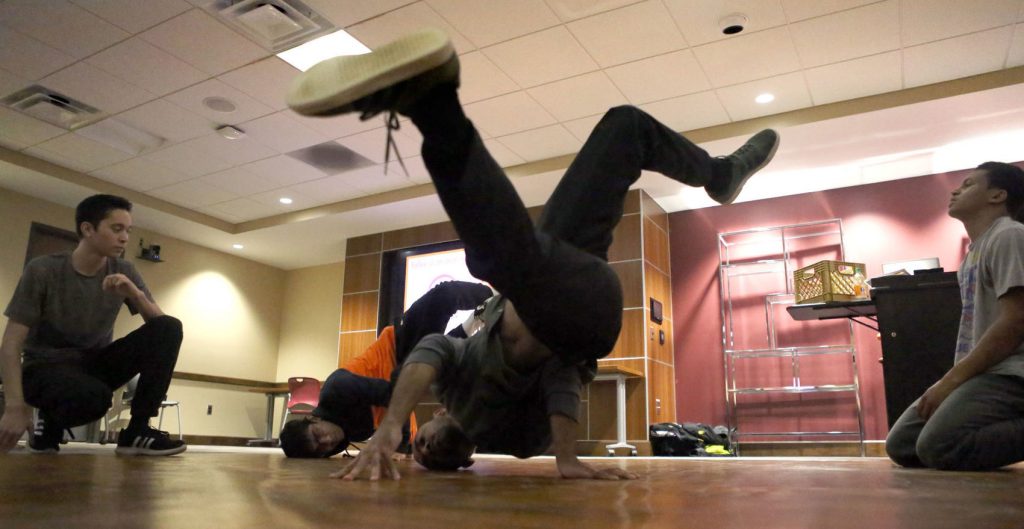Libraries and Education for the Future
Kids across St. Louis learning to code earlier than ever as demand from future employers grows via St Louis Post-Dispatch
“The students are years from joining the workforce, but schools, businesses and nonprofits are turning their attention to solving a skills shortage amid increasing employer demand.”
Orem Public Library takes patrons to space via Daily Herald
“As part of the library’s NASA @ My Library grant, Chelsea Conklin, associate librarian in Orem’s outreach department, flew out to NASA’s Goddard Space Flight Center in Maryland, and took library patrons with her — albeit through social media. Conklin streamed parts of her trip Feb. 12, and took tons of pictures at the space center, so patrons could be a part of the experience.”
Libraries continue to evolve in a technological age via Capital News Service
“There’s a divide between families that have technology available and those who don’t,” said Gail Madziar, director of Michigan Association of Libraries. “If you’re a student that needs to do their homework, sometimes a library is the only place that you have to access information in a safe place.”
Data & Privacy
Facebook Users Are Suddenly Realizing How Far Data Collection Goes via Newsy
“Over the years, Facebook has been pretty open about the fact it collects people’s data. But since the Cambridge Analytica scandal broke, it’s clear many users had no idea how deep those practices went — and that shock has put Facebook under the microscope. One realization came after a news story detailed how U.S. Immigration and Customs Enforcement agents use Facebook data to track and locate suspects.”
Being Open and Connected on Your Own Terms with our New Facebook Container Add-On via The Mozilla Blog
“As a user of the internet, you deserve a voice and should be able to use the internet on your own terms. In light of recent news on how the aggregation of user data can be used in surprising ways, we’ve created an add-on for Firefox called Facebook Container, based on technology we’ve been working on for the last couple of years and accelerated in response to what we see in terms of growing demand for tools that help manage privacy and security.”
New Interactive Data Tool: U.S. Immigration Court Outcomes by County of Residence via LibraryJournal infoDocket
Exciting Events in Archives
New and Online for the First Time from the Library of Congress: Archival Materials of Susan B. Anthony and Elizabeth Cady Stanton via LibraryJournal infoDocket
“The close friendship, collaboration and activism of Susan B. Anthony and Elizabeth Cady Stanton changed history and led to fuller equality for women,” said Librarian of Congress Carla Hayden. “Their papers are part of an unparalleled collection of resources in the Library of Congress documenting the American woman suffrage campaign. As the centennial of the 19th Amendment extending voting rights to women nationally approaches, these collections will be a great resource for researchers and students around the world.”
A Celebration of DC Comics at the Library of Congress via LibraryJournal infoDocket
“The Library of Congress will celebrate the 1000th issue of seminal DC comic book series Action Comics, a commemoration of 80 years of Superman, with a live interview featuring DC legends. Former publisher and president of DC, Paul Levitz, will join famed DC writer and artist Dan Jurgens, known for his work on the Superman series and the pop culture phenomenon “The Death of Superman,” for a conversation about the history of superhero comics, the writers and artists who create comics and the legacy of DC’s iconic Superman character.”
NARA Shares Hall-of-Famers’ Baseball-Related Patents & NARA’s Baseball History Ebook via LibraryJournal infoDocket
“Six Hall of Fame members—five players/managers and one umpire—have patents in the National Archives collection, ranging from bases to sliding pads, sunglasses to cleats. Hall-of-Famers Fred Clarke, Tommy McCarthy, Bill Klem, Kid Nichols, Elmer Flick, and Max Carey were all issued patents related to the game of baseball. Clarke and Carey are the only two to have more than one patent—Clarke has four and Carey has two, according to Beebe.”
